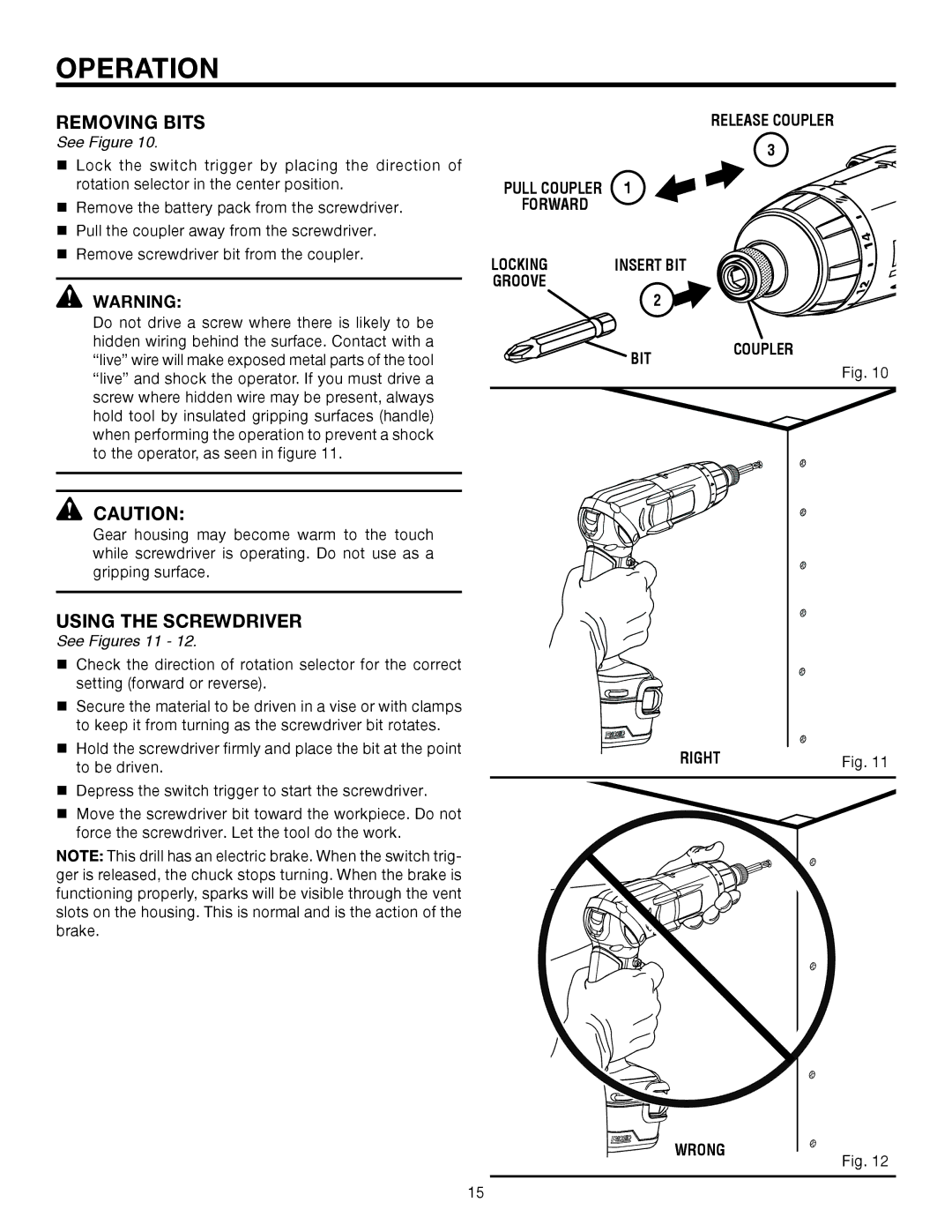
OPERATION
REMOVING BITS
See Figure 10.
n Lock the switch trigger by placing the direction of rotation selector in the center position.
nRemove the battery pack from the screwdriver.
nPull the coupler away from the screwdriver.
nRemove screwdriver bit from the coupler.
WARNING:
Do not drive a screw where there is likely to be hidden wiring behind the surface. Contact with a “live” wire will make exposed metal parts of the tool “live” and shock the operator. If you must drive a screw where hidden wire may be present, always hold tool by insulated gripping surfaces (handle) when performing the operation to prevent a shock to the operator, as seen in figure 11.
|
| RELEASE COUPLER |
|
| 3 |
PULL COUPLER | 1 |
|
FORWARD |
|
|
LOCKING | INSERT BIT |
|
GROOVE |
|
|
| 2 |
|
| BIT | COUPLER |
| Fig. 10 | |
|
|
CAUTION:
Gear housing may become warm to the touch while screwdriver is operating. Do not use as a gripping surface.
USING THE SCREWDRIVER
See Figures 11 - 12.
nCheck the direction of rotation selector for the correct setting (forward or reverse).�
nSecure the material to be driven in a vise or with clamps to keep it from turning as the screwdriver bit rotates.�
nHold the screwdriver firmly and place the bit at the point to be driven.�
nDepress the switch trigger to start the screwdriver.
nMove the screwdriver bit toward the workpiece. Do not force the screwdriver. Let the tool do the work.
NOTE: This drill has an electric brake. When the switch trig- ger is released, the chuck stops turning. When the brake is functioning properly, sparks will be visible through the vent slots on the housing. This is normal and is the action of the brake.
RIGHT | Fig. 11 |
WRONG | Fig. 12 |
|
15
